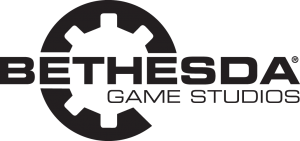

According to Todd Howard, the creative director behind the recent string of Elder Scroll and Fallout titles, recently shared that Bethesda Game Studios is going to be working on three new projects during his speech at this year’s DICE Summit. Not only are did he announce these three endeavors, but he also stated that these projects are different from the studio’s previous efforts. However, Howard alluded to the projects not being shown to the public for a good while.
Here is a snippet of Todd Howard’s DICE Summit talk:
“We actually have three longer-term projects that are all — we’ll talk about them at a much future date — they’re different from anything we’ve done before while also being a Bethesda style game: big and crazy,” Howard said, “but in many ways different from what we’ve done before.” (Todd Howard – Creative Director, Bethesda)
This startling revelation was made in lieu of Bethesda announcing three new DLC expansions for Fallout 4 on top of offering some information on the plan for its season pass and future DLC ventures. This is all excepting the fact that Fallout 4 is still suffering from technical issues on consoles with the issue not really being addressed with the same urgency and priority as the DLC packages. It seems as though Bethesda Game Studios is in danger of repeating history as seen with its previous incarnation Bethesda Softworks. You may think this is a far-fetched notion, but the company has gone down this road before and it almost led to its demise.
Bethesda Softworks is responsible for some great open-world RPG titles, but what a lot of people do not know is that the company also did quite a few sports and licensed games for a time. The only thing was the problem with this is that the company would spread its team thin across multiple projects, shooting for quantity only hoping that quality would fall into the mix somehow. More often than not, this resulted in buggy titles that lacked polish and, in some cases, would be behind the technology curve.
This all came to a head with the release of The Elder Scrolls Adventures: Redguard which was met with lukewarm reception and poor sales and it is not hard to see why. The game was suffering from the slew of issues and a loss in confidence created by release of The Elder Scrolls: Battlespire, which was also an unstable game that lacked polish. Gamers were willing to put up with this title’s issues, but they refused to deal with it a second time.
On top of this, Redguard was a game that was relying on extremely antiquated game engine technology. Not attempting to diminish the many accomplishments of Xngine, it was revolutionary for many reasons including the use of the mouse to rotate the viewpoint on both X and Y axes. It also was a full on 3D engine with height and the inclusion of 3D polygonal character models that existed at least a year commercially before the seminal release of the first Quake in 1996. However the engine was simply looking bad by the time 1998 came around. This engine was trotted out for a good four years before being dropped for the NetImmerse engine which later became known as Gamebryo. Lastly, this was a MS DOS game made in 1998. By that time, Windows had been a viable platform and environment for running and supporting games.
These issues led to the Bethesda Softworks team being truncated to a woefully small group and the company even had to be bailed out by one of the few enterprises that was also founded by Christopher Weaver. Though Redguard was directed by Todd Howard, is was simply his directorial debut. He was given the chance to create the game that would either save the struggling studio or lead to its doom. Obviously this game saved Bethesda and its name is The Elder Scrolls III: Morrowind. The game was a critical and comercial success across the PC and Xbox for a few reasons. The whole team (which was bolstered with more employees) at Bethesda was united to work on this one game and was not spread thin across multiple projects. Also, it was a game that was finally using the new technology of NetImmerse and not the historically important, but ancient Xngine.
Bethesda later followed up Morrowind with Oblivion which innovated in similar fashion, but Bethesda’s historic pattern of trotting out aging tech reared its head once again with the releases of Falout 3 and Fallout: New Vegas. This is also apparent with Fallout 4 using the Creation Engine that looked great with Skyrim, but was lacking for the post apocalyptic RPG. Each of these titles, while being fun experiences, exhibit Bethesda trademark technical gaffes that simply have become synonymous with the studio.
Jeff Gerstmann perhaps sums this up with his final sentence in his Fallout 4 review for consoles:
“It’s another one of those games, for better and for worse. “ (Jeff Gerstmann – Editor, Giant Bomb)
This is not meant to bog anyone down with a ton of sobering video game history. Rather, it is a cautionary retrospective look meant to convey how potentially dangerous it can be for Bethesda Game Studios to try spreading itself thin to a point where quality suffers more than the initial release of Fallout 4. If the company is already trying push its DLC expansions before the base game is perfectly stable then how is this going to bode for these three brand new projects? Unless the studio plans to significantly expand its staff and invest some new tech to prepare for these undertakings, the studio could possibly eventually end up repeating history in the worst way.
An announcement trailer was also released.
The system allows players to manage their digital games
In a recent web post.